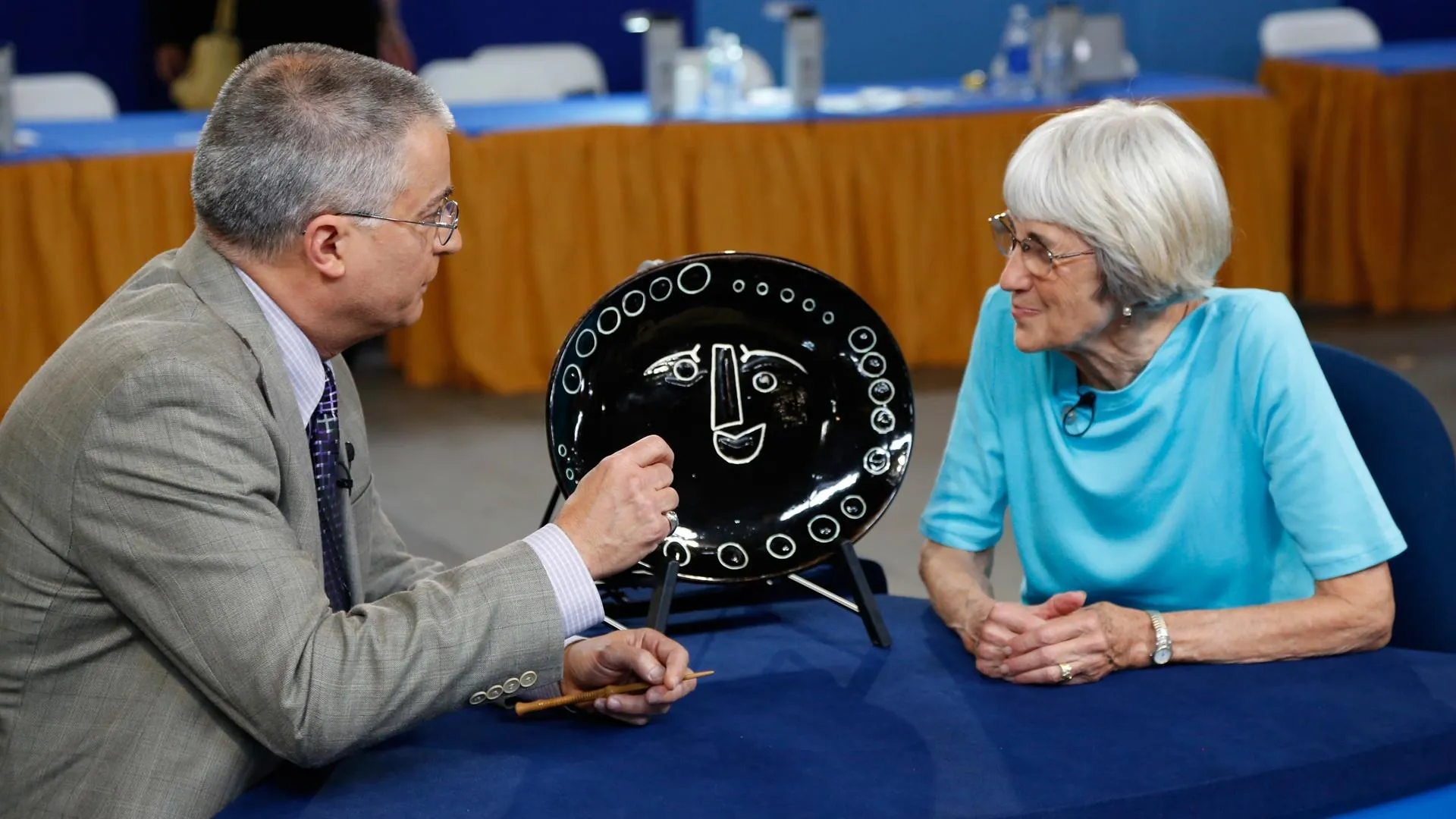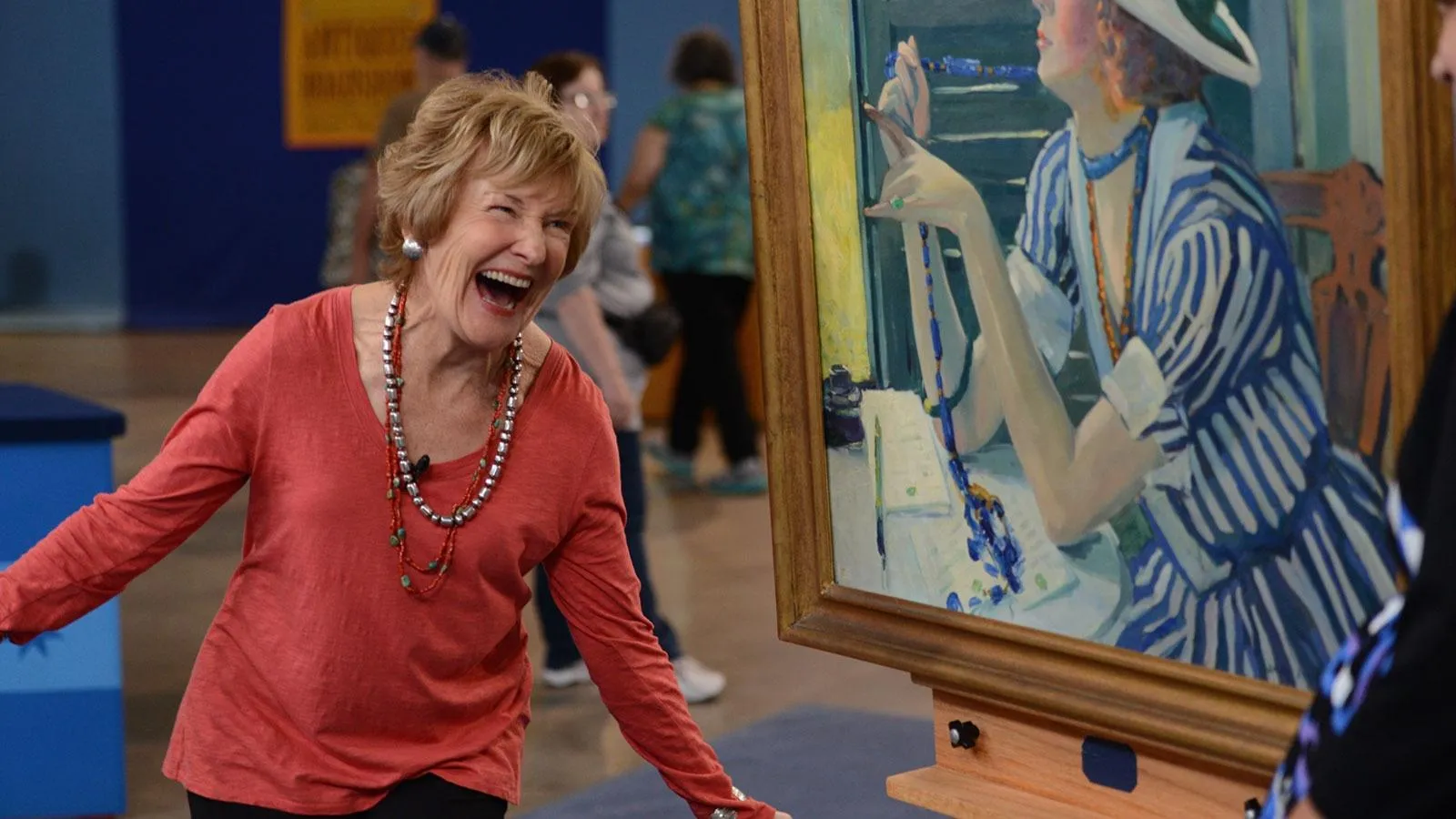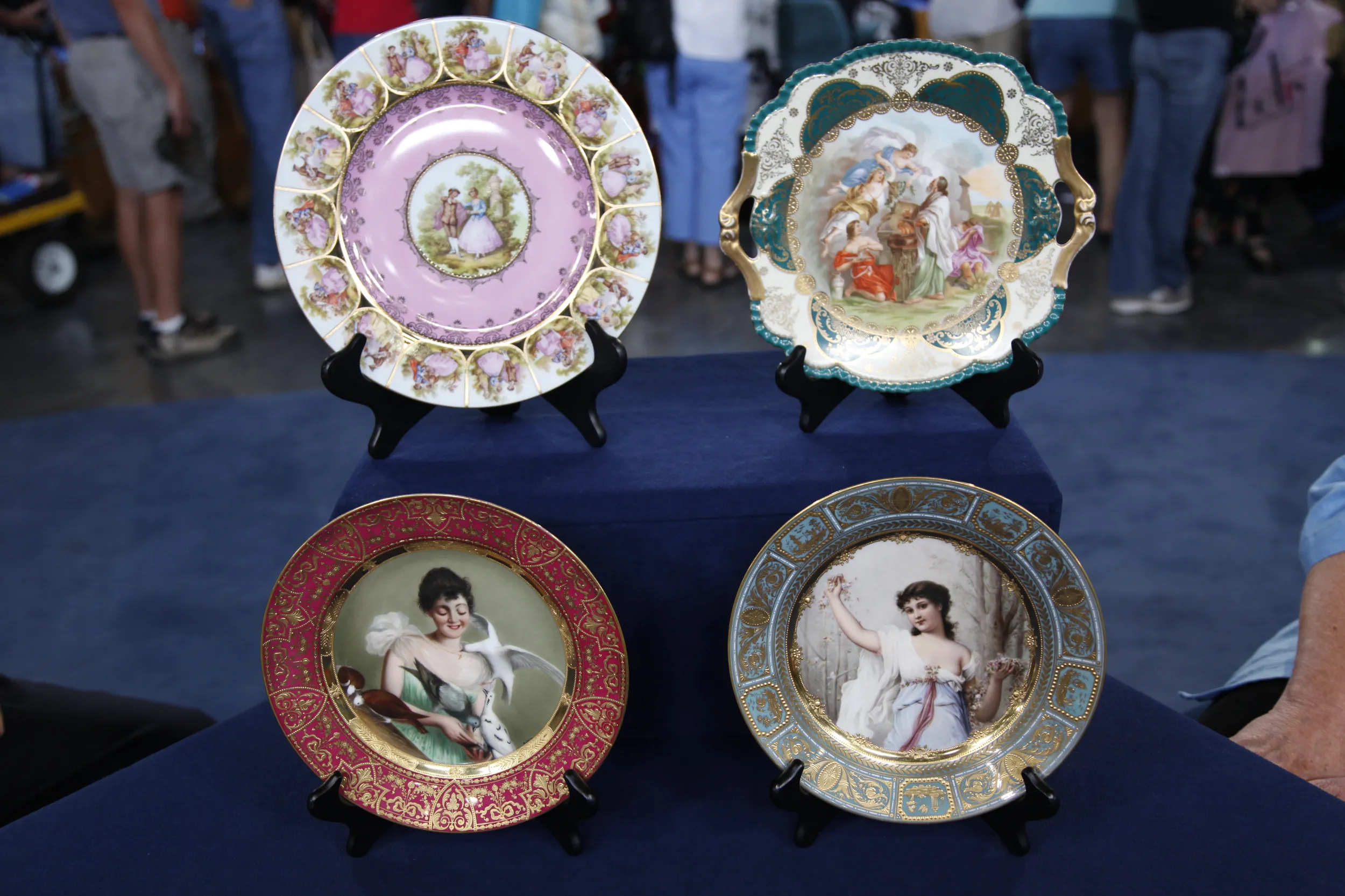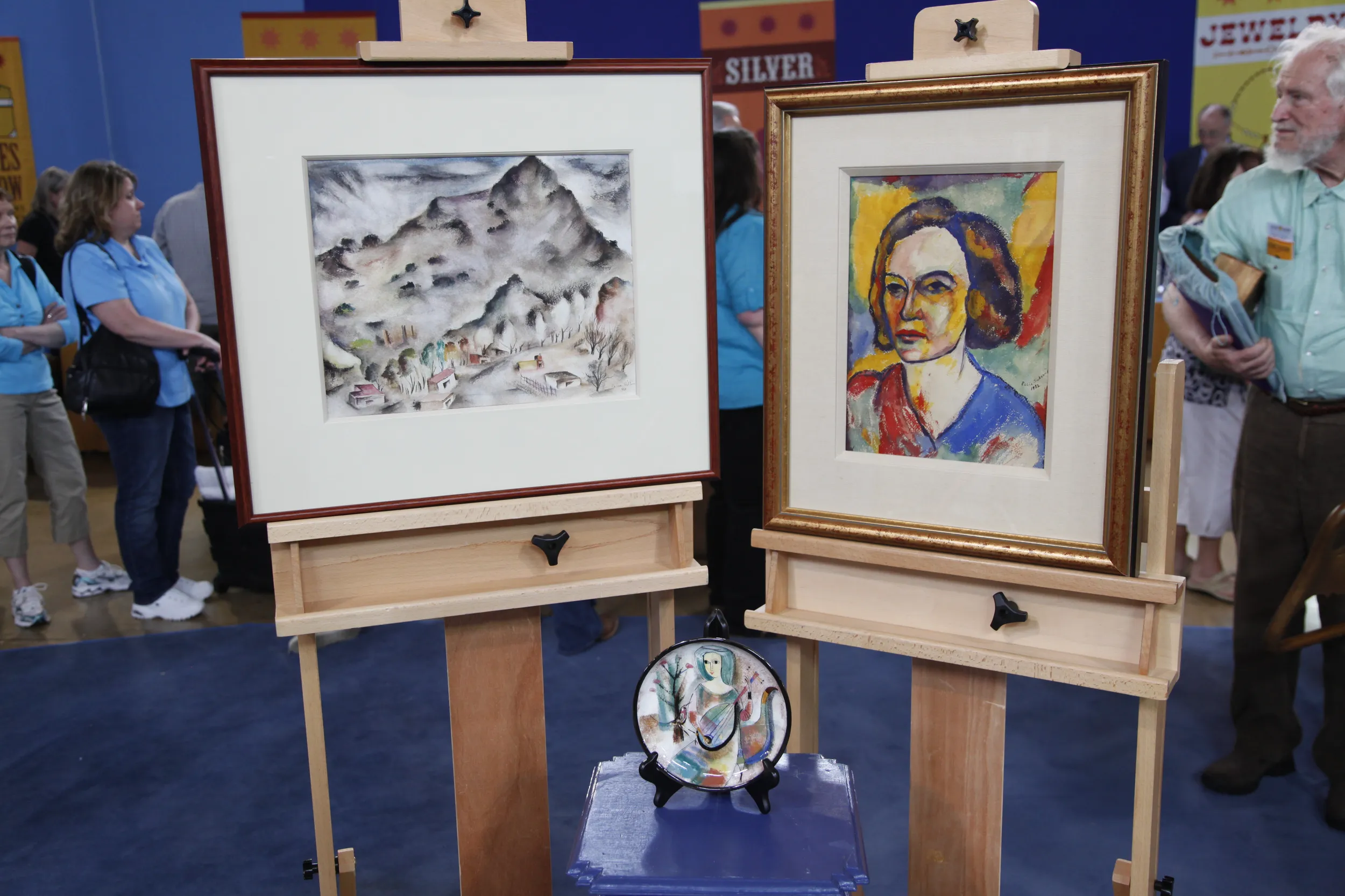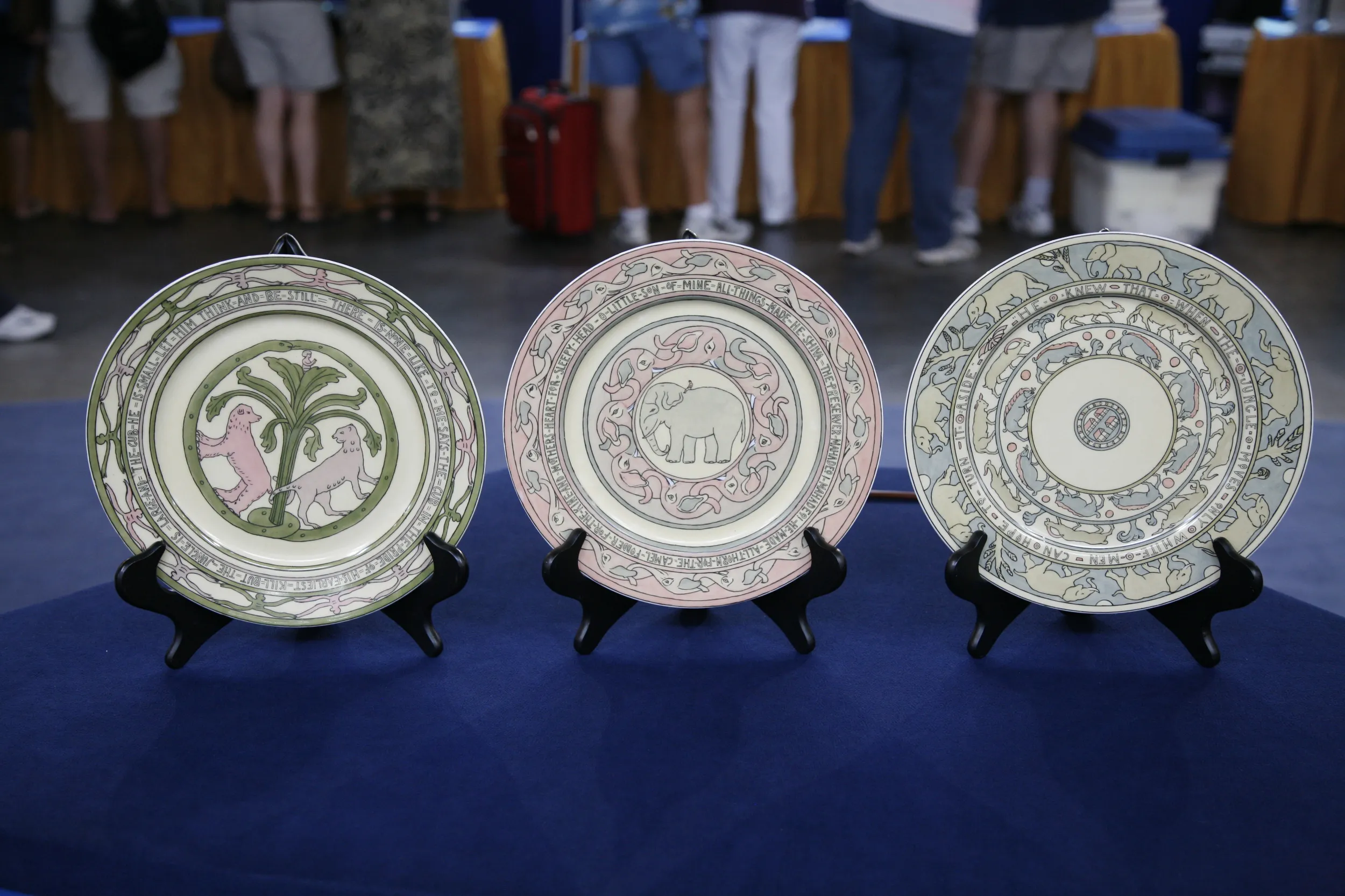GUEST: It's been in our family since about 1970. We bought it in Rhode Island. Didn't even realize it was a Picasso until about five years ago. I have to admit... (chuckles) ...that it hung over the stove in the kitchen, and all of our kids loved the smiley face, and no one's perfect, so it didn't bother me that there was a chip here. Five years ago, we went into a gallery and saw not an oval, but a circular plate with pretty much the same facial features, but not the circles around here. And I said, "Oh, we have a plate pretty similar to that." I said, "It's over the stove," and the guy sort of gasped and said, "Over your stove?" And I said, "Yeah, I have a plate collection." He said, "Do you know what you have?" And I said, "No, not really." He opened a book, and he said, "Is yours sort of like this? The oval one?" And I said, "Yeah." He said, "Do you know what it's worth?" And I said, "Maybe $50, maybe $100? I don't think we paid any more than that." He said, "My dear, it's increased. I think you have maybe $1,000." And the guy said, "Do me a favor, and take it off the wall above the stove." So it had layers-- I hate to say it-- of grease.
APPRAISER: Well, I can only imagine the amount of grease that must have been on it over the kitchen-- it's just one of those things, you bought it because you liked it.
GUEST: Oh, yeah, oh, yeah.
APPRAISER: And you've enjoyed it because of the decoration. The actual name for this particular dish is "Face in an Oval." Picasso did a lot of these, uh, special editions for the Madoura Studio in the south of France.
GUEST: Okay, all right.
APPRAISER: He actually did 633 different objects that were taken, and they made special editions for.
GUEST: Okay.
APPRAISER: Some are jugs, some are figures, and some are dishes of different shapes. Now, you did mention that there was a little bit of enamel loss there.
GUEST: Yes...
APPRAISER: And we do see that pretty regularly on some of these pieces that have high relief.
GUEST: Yes.
APPRAISER: But otherwise, it's in quite remarkable condition. What's really important to note...
GUEST: Okay.
APPRAISER: ...for this is that in this particular issue-- and by the way, this was done in 1955.
GUEST: Oh.
APPRAISER: This tells us that they made 100 of them.
GUEST: Okay.
APPRAISER: And this is number 23 of 100. Although this is 23 of 100, there's no guarantee that they actually got around to making the full 100 in the series.
GUEST: Okay.
APPRAISER: Here we have the Madoura name.
GUEST: Right. Okay.
APPRAISER: And here, which is also important, is that this is from an original print by Picasso.
GUEST: Mm-hmm.
APPRAISER: Now, Picasso had a relationship with the Madoura Studio for about 24 years. So you can imagine the amount of product..
GUEST: Oh, yeah.
APPRAISER: ...that came from this.
GUEST: Oh, yeah.
APPRAISER: This is a really, really nice example, and I have to tell you something about the Picasso market. In the last four or five years, it's
skyrocketed. It's just taken off tremendously. So you're snickering in advance-- this is good. So what do you think it's worth today?
GUEST: I haven't a clue.
APPRAISER: You haven't a clue? Would you be surprised that an auction value in today's market, probably on the conservative side, would be in the range of $10,000 to $15,000?
GUEST: Mm! (chuckling)
APPRAISER: I love you, too.
GUEST: That's fabulous. (laughs)
APPRAISER: That's fabulous? Yes, it's really a wonderful example. There's really no explanation.
GUEST: Oh, no.
APPRAISER: Trends change in the antique business.
GUEST: Yes, yes, yes.
APPRAISER: And what's changed in this, over the last few years, is that Picasso has just skyrocketed.

